Coffee grounds are a popular addition to garden compost because they enhance soil acidity and provide essential nutrients. While many plants benefit from this boost, some do not respond well to the added acidity and may suffer.
Knowing which plants do not thrive with coffee grounds is important to ensure healthy and vigorous growth.
By understanding these preferences, gardeners can make more informed decisions and create a well-balanced environment for their plants.
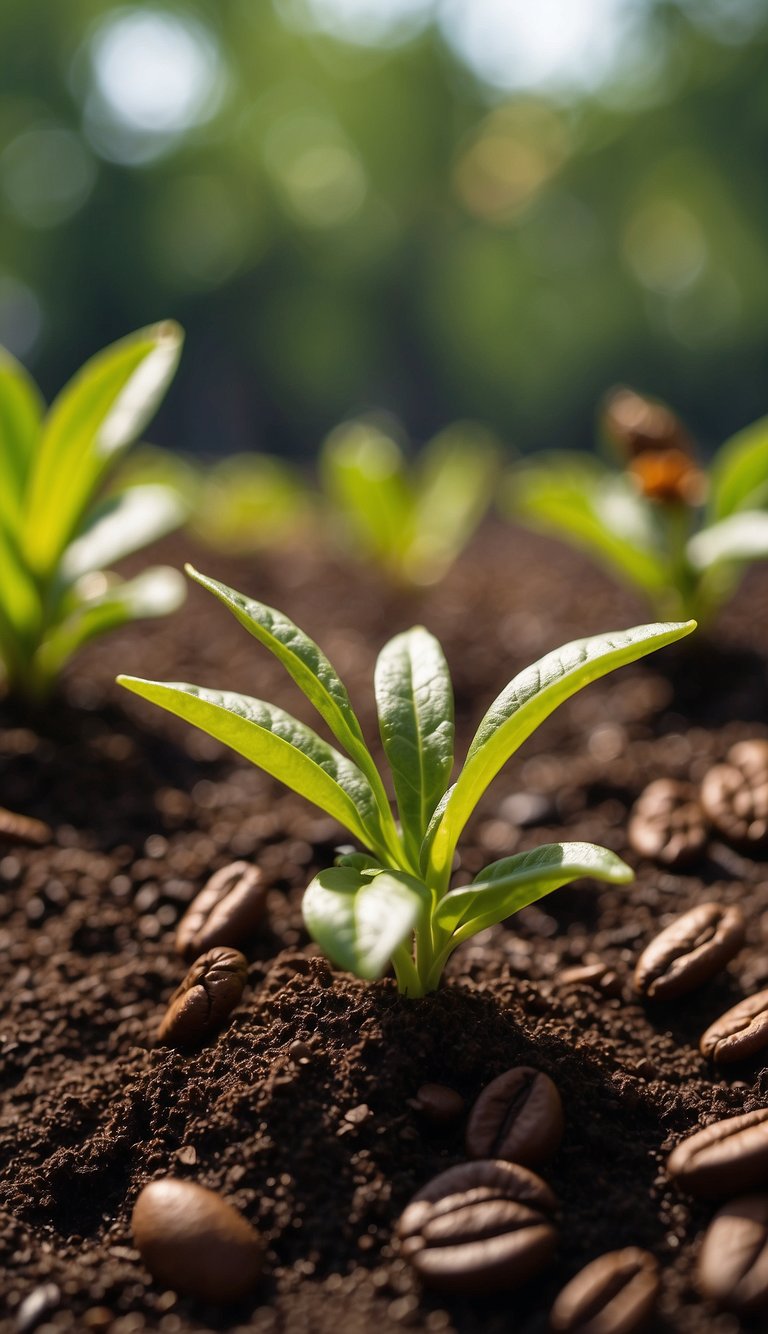

#1 – Chrysanthemum
Chrysanthemums, often called mums, thrive in neutral to slightly acidic soil. Using coffee grounds in their soil can make it too acidic, which can hurt their growth.
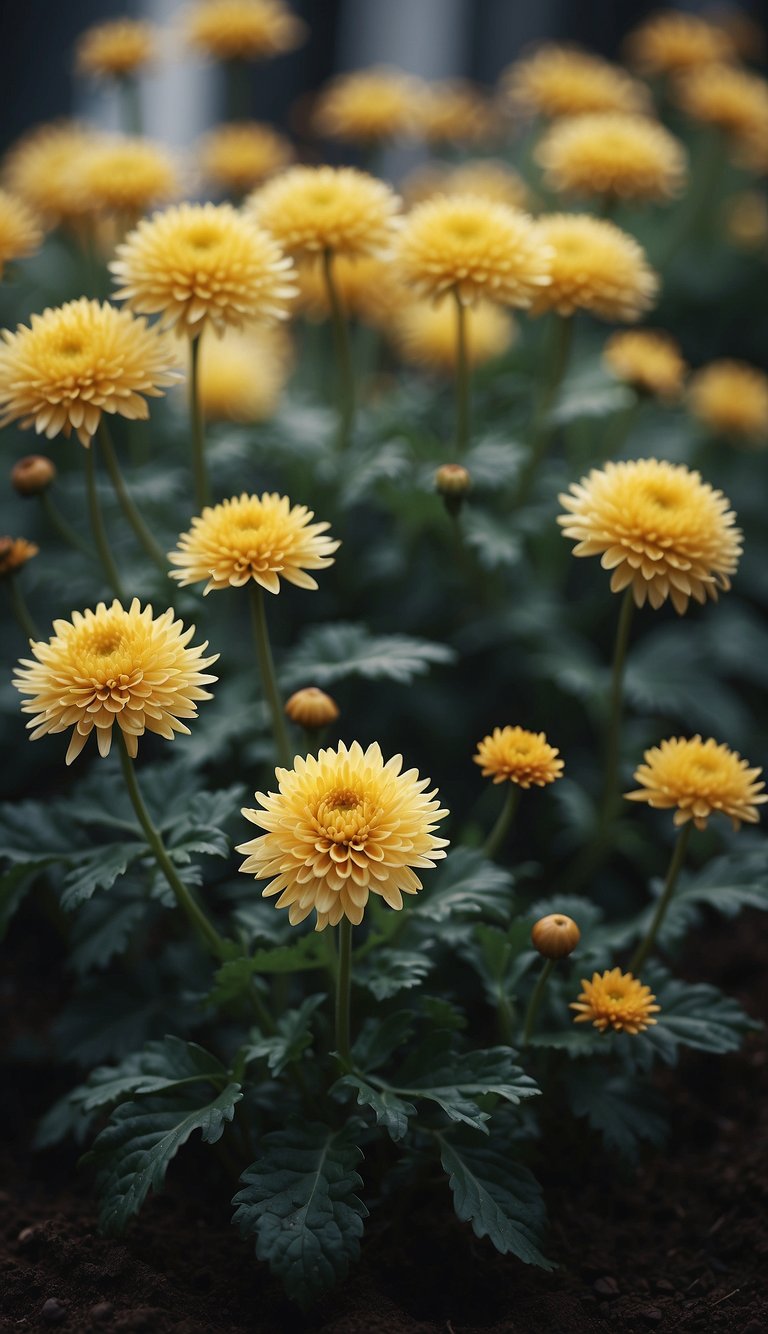

These flowers prefer well-draining soil with a pH between 6.5 and 7.0. Adding coffee grounds can disrupt this balance and lead to poor blooming.
Additionally, excess acidity can cause nutrient imbalances. Chrysanthemums need nutrients like nitrogen, phosphorus, and potassium in specific amounts. Coffee grounds can interfere with their absorption, leading to weaker plants.
Instead of coffee grounds, use compost or balanced fertilizers suitable for neutral soil. This helps chrysanthemums grow strong and produce vibrant flowers.
When planting chrysanthemums, ensure the soil mix matches their preferences for the healthiest growth.
If you want beautiful and healthy chrysanthemums, avoid using coffee grounds and stick to their specific soil needs.
#2 – Geraniums
Geraniums don’t benefit from coffee grounds. These plants thrive in slightly alkaline to neutral soil. Using acidic coffee grounds can harm them. Instead, a balanced fertilizer is a better choice.
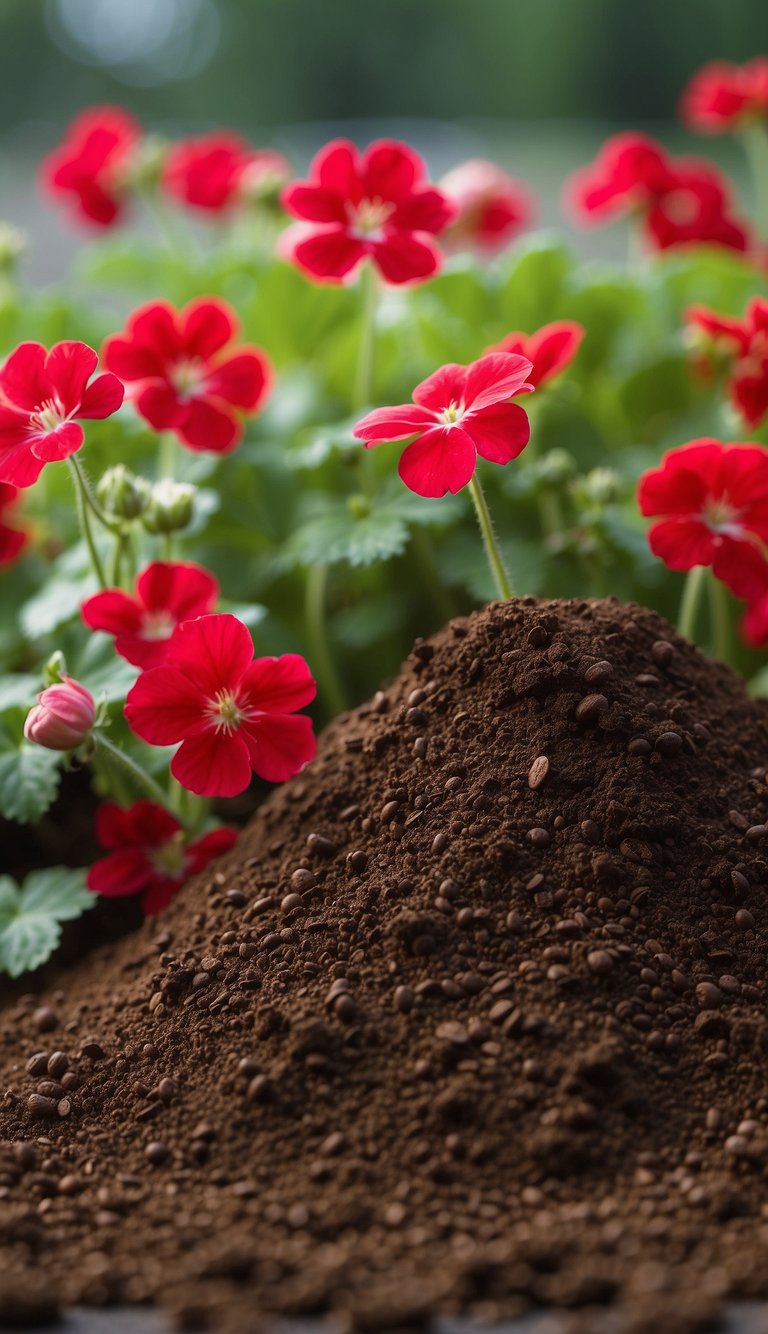

Coffee grounds can make the potting mix for geraniums too acidic. This can lead to poor growth and less vibrant flowers. In pots, the soil’s pH is crucial.
Some people think scented geraniums prefer coffee grounds due to their nitrogen content. However, this can be misleading. Too much acidity can still hinder overall plant health, even if nitrogen is present.
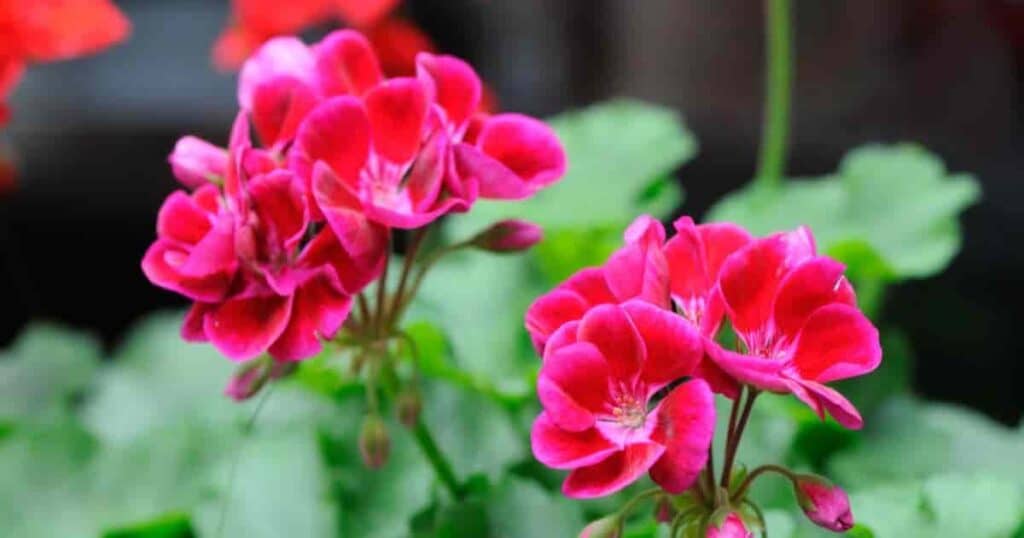

Avoid using coffee grounds on geraniums if you want them to flourish. Stick to fertilizers that match their soil preference for the best results.
#3 – Lavender
Lavender is a popular plant known for its fragrant flowers and its use in aromatherapy and cooking. It grows well in full sun and prefers hot, dry, and sandy soil.
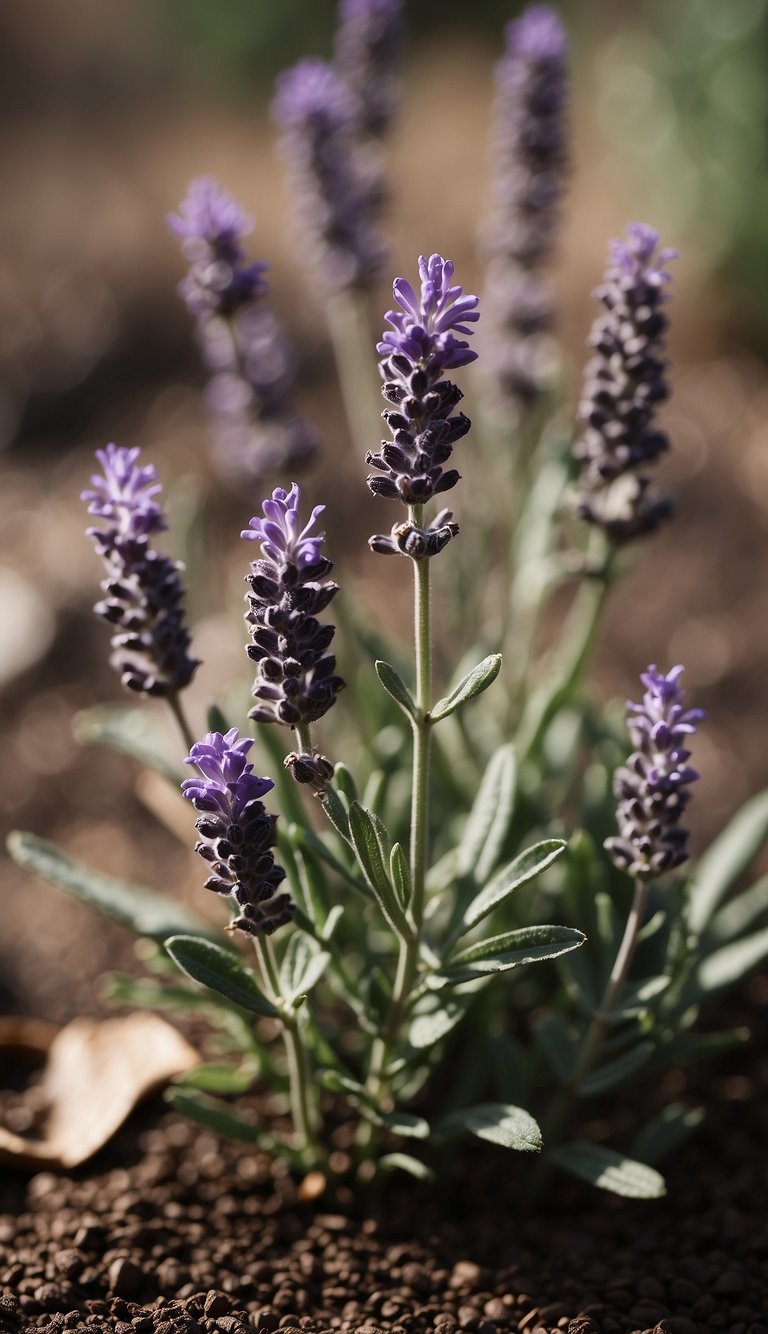

Coffee grounds contain nitrogen, which can be beneficial for many plants. However, lavender prefers non-acidic soil, while coffee grounds are acidic. This acidity can hinder its growth.
Using coffee grounds as mulch or compost can also cause the soil to retain too much moisture. Lavender needs well-draining soil to thrive. Too much moisture can lead to root rot, which is harmful to lavender plants.
For these reasons, avoiding using coffee grounds around lavender is best. Instead, choose other organic materials that match its soil preferences. This will ensure that lavender remains healthy and continues to bloom beautifully.
For more information, refer to this article on the effects of coffee grounds on lavender plants.
#4 – Aloe Vera
Aloe vera plants prefer neutral to alkaline soil conditions. Coffee grounds, which are acidic, can disrupt their growth. When mixed with soil, coffee grounds lower the pH, making it unsuitable for aloe vera.
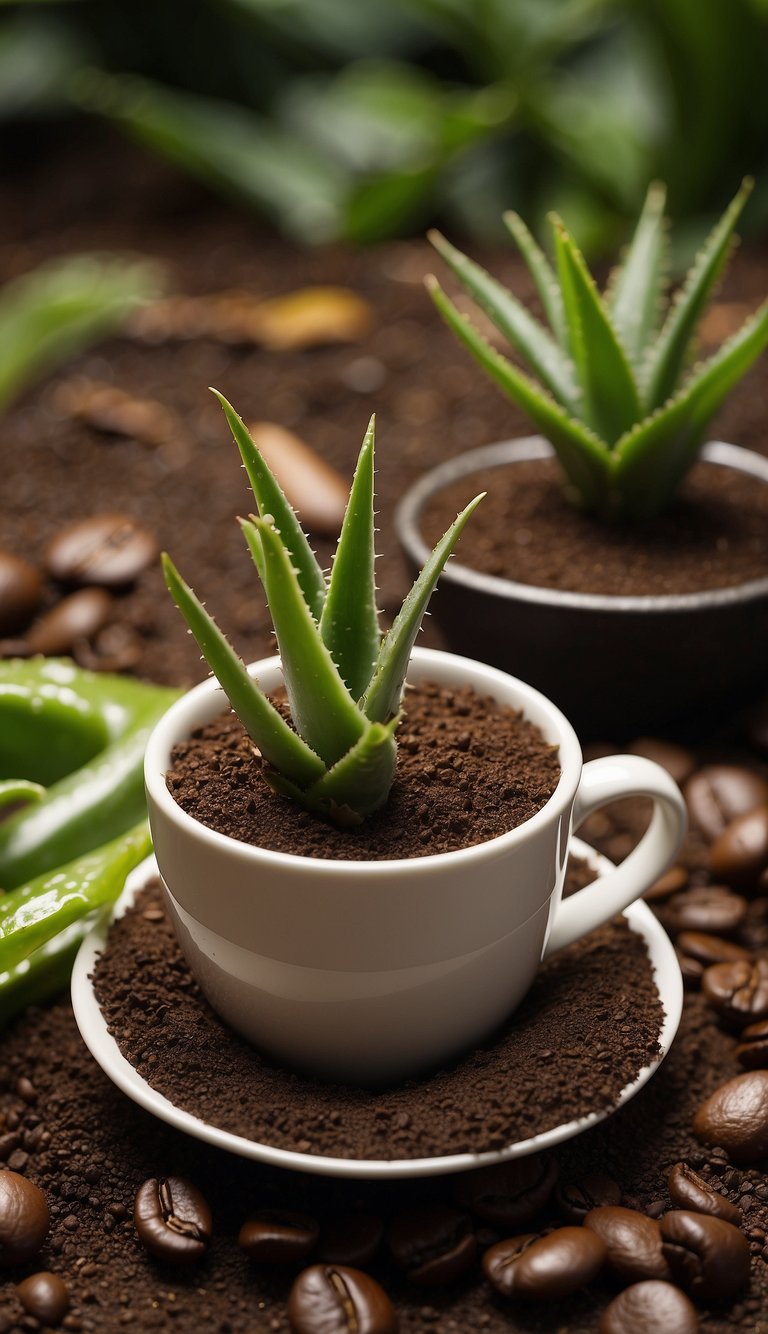

Aloe vera thrives in well-draining soil. Coffee grounds can alter the soil texture, leading to poor drainage and potential root rot. Succulents like aloe vera need soil that allows water to drain quickly.
Using coffee grounds as fertilizer for aloe vera can impede its growth. Aloe vera requires fewer nutrients compared to other plants. Coffee grounds can overwhelm it with too much organic matter, hindering its development.
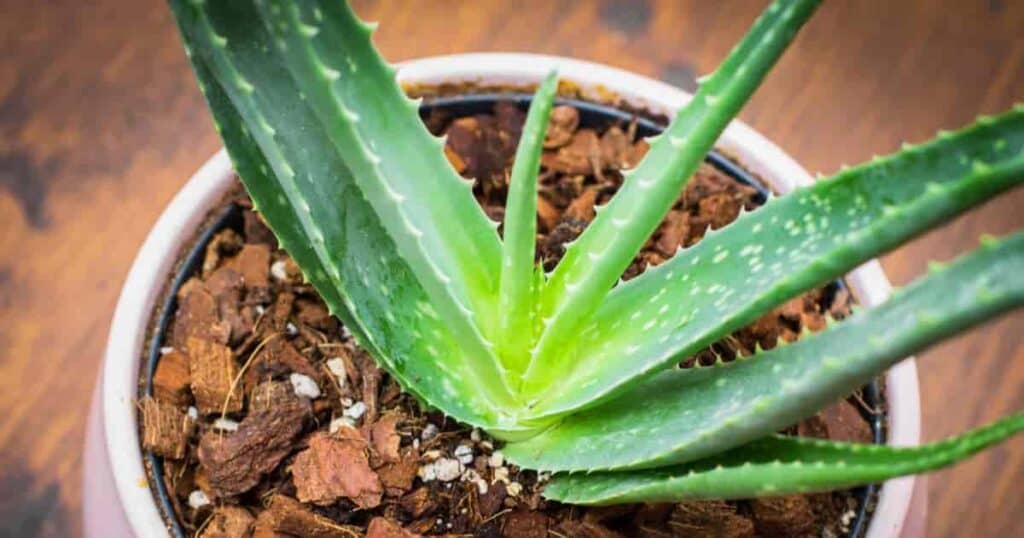

For aloe vera, using a soil mixture that supports proper drainage and maintains a pH level that suits the plant is crucial. Incorporating coffee grounds can make the soil too dense and negatively affect plant health. For more details, visit Epic Gardening’s guide.
Providing the right conditions, without adding coffee grounds, ensures that aloe vera grows strong and healthy. This practice helps avoid potential issues related to acidity and drainage. You can read more at The Skilled Gardener.
#5 – Dianthus
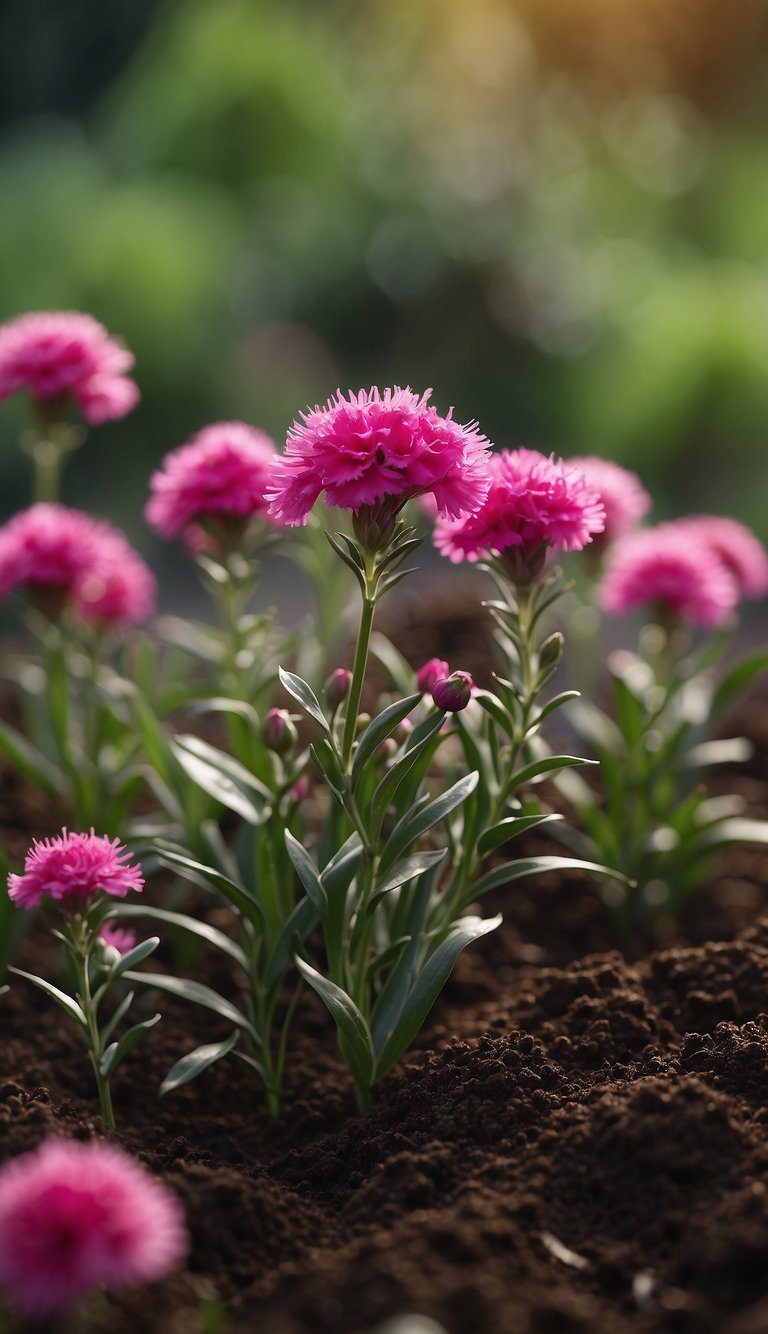

Dianthus, commonly known as pinks or carnations, do not thrive with coffee grounds.
These plants prefer slightly alkaline to neutral soil. Coffee grounds, being acidic, can upset this balance.
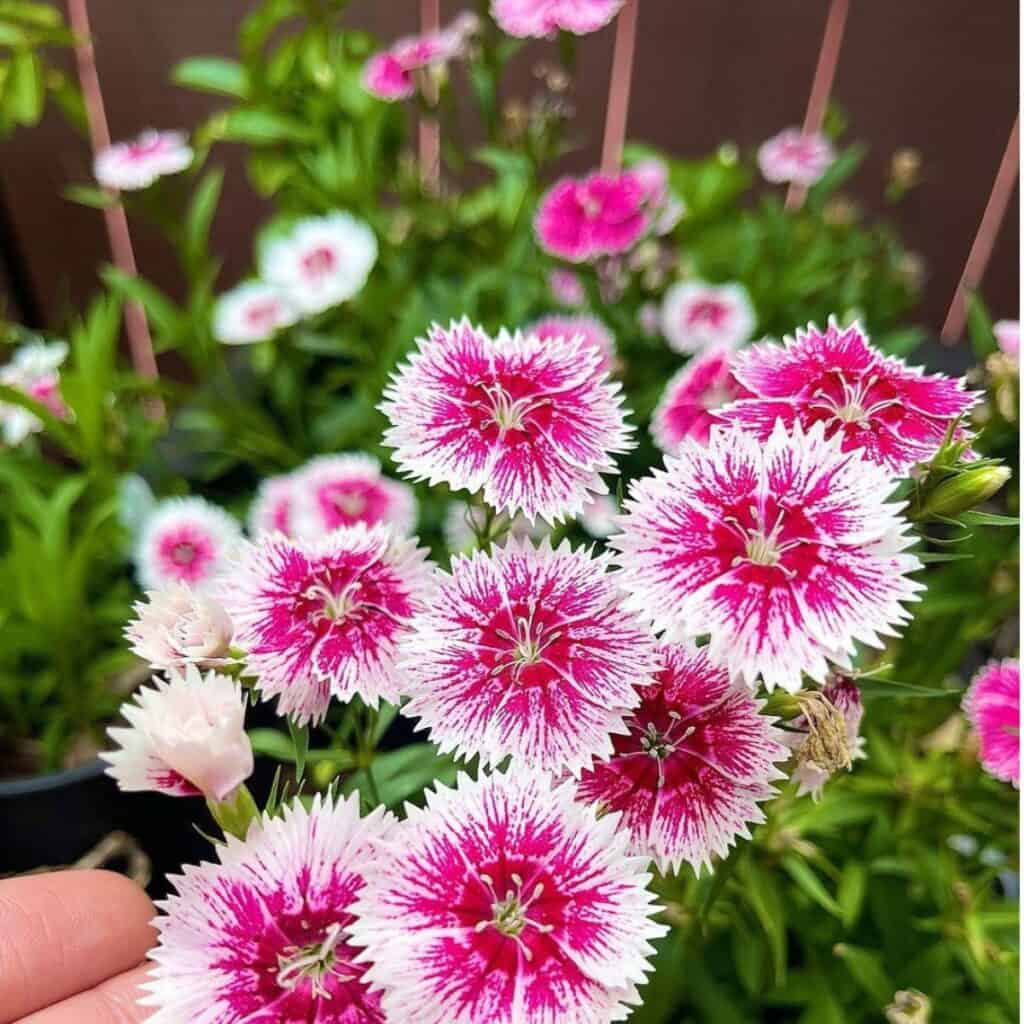

Adding coffee grounds to the soil around Dianthus may hinder their growth. It can cause nutrient imbalances, leading to issues like poor flowering.
Gardeners should opt for other compost materials when cultivating Dianthus. Organic matter that maintains the soil’s pH balance is ideal for these delicate plants.
#6 – Cacti and Succulents
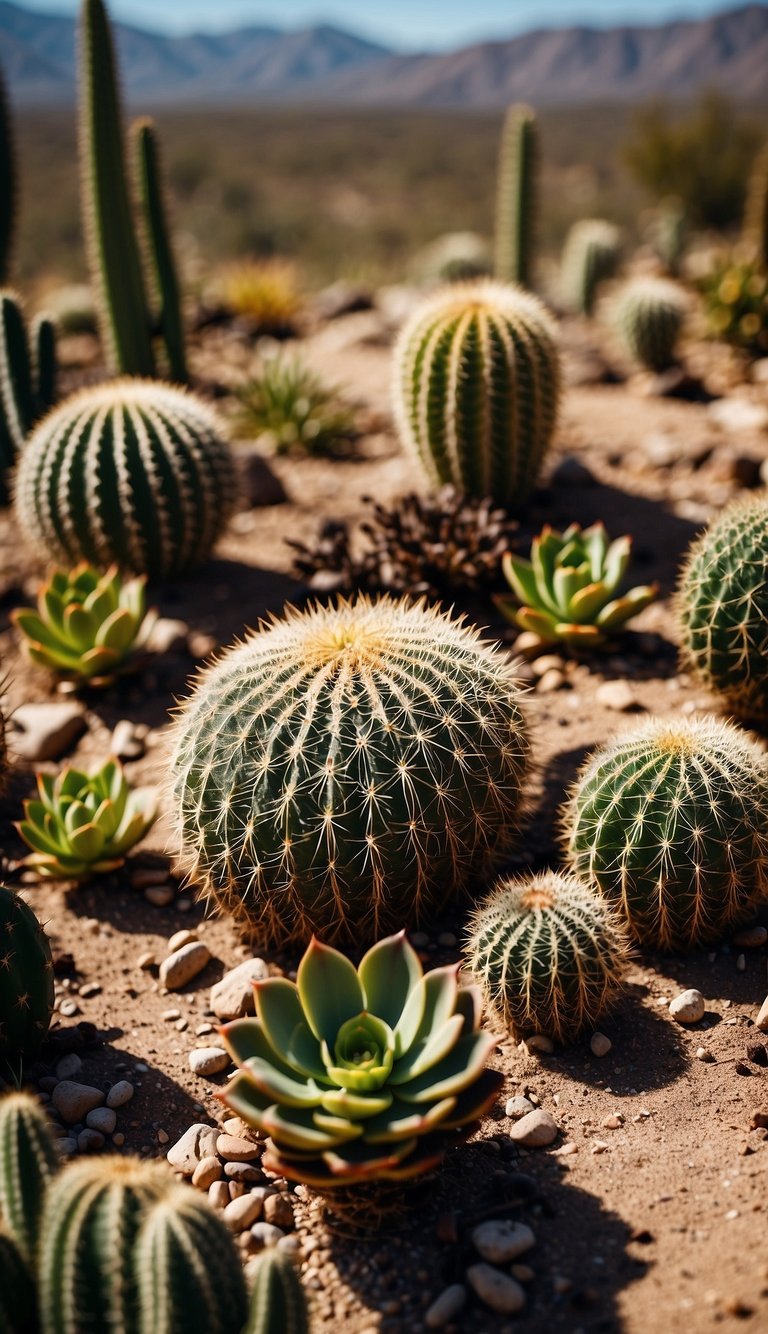

Cacti and succulents prefer well-draining soil, making coffee grounds a poor choice for them. Coffee grounds can retain moisture, which is not ideal for these plants.
Most cacti and succulents thrive in dry conditions. Excess moisture from coffee grounds can lead to root rot. This can damage or even kill the plant.
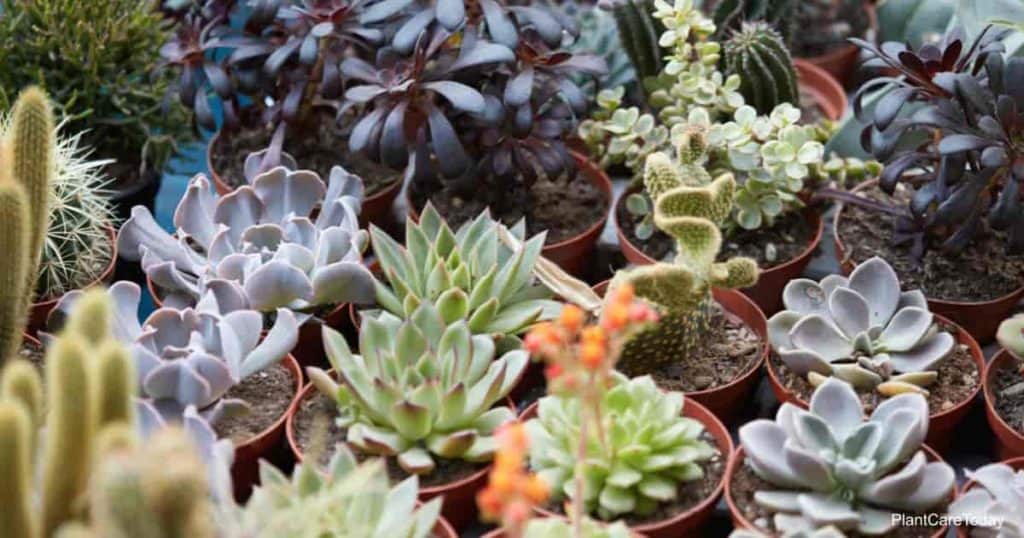

The acidic nature of coffee grounds is another concern. Many cacti and succulents do not do well in acidic soil. They generally prefer soil that is neutral or slightly alkaline.
So, while coffee grounds benefit some plants, they are not recommended for cacti and succulents. Sticking to well-draining soil mixes will help these plants thrive.
#7 – Shasta Daisy
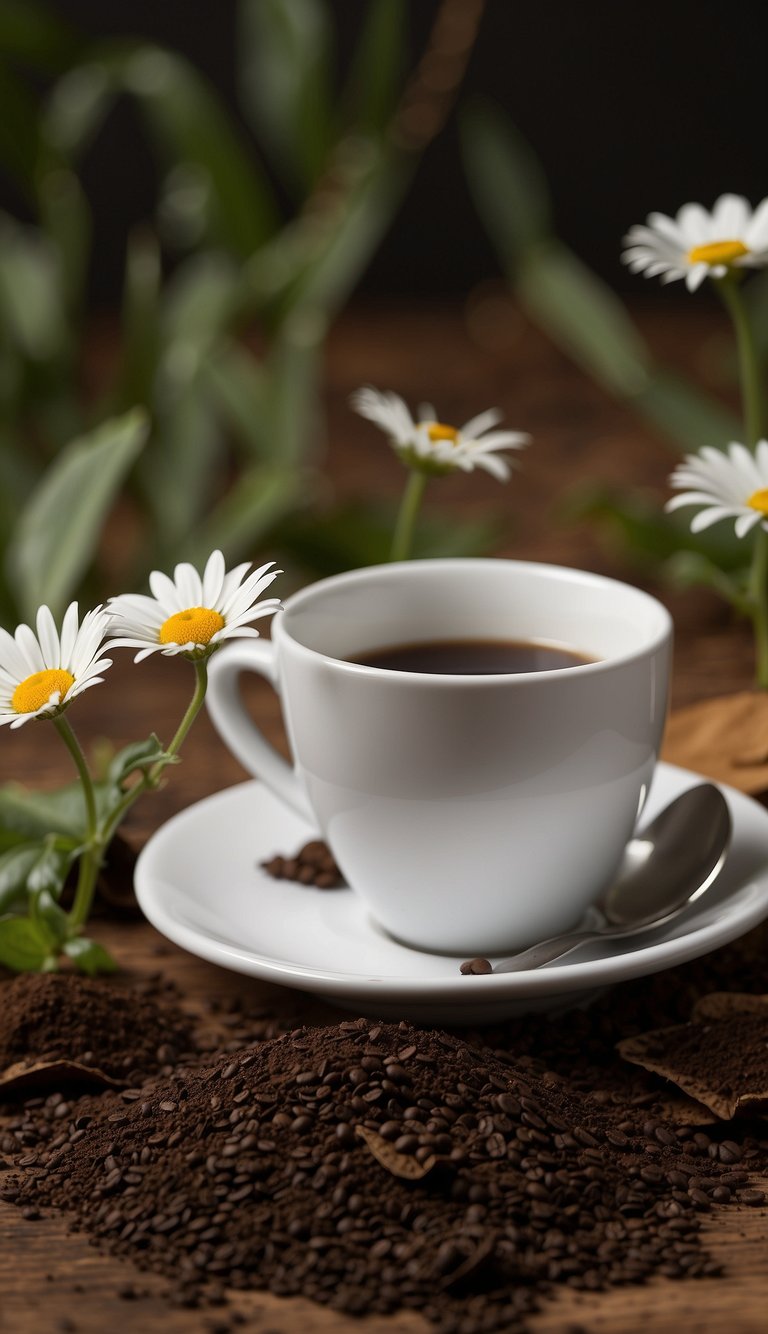

Shasta Daisies are popular for their cheerful white petals and yellow centers. They thrive in well-draining, nutrient-rich soil and prefer a neutral to slightly acidic pH level.
Using coffee grounds in the soil can increase acidity, which these plants do not like. Too much acidity can lead to poor growth and less vibrant blooms.
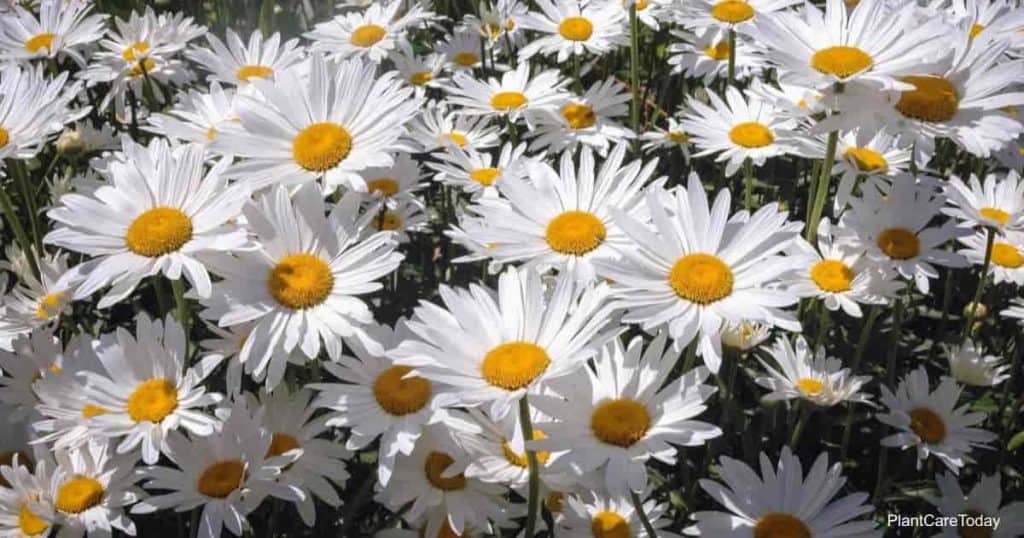

It’s best to keep coffee grounds away from Shasta Daisies. Instead, use compost or other balanced fertilizers to ensure healthy growth. For more tips on care, you can refer to this guide on Shasta Daisies.
#8 – Snapdragon
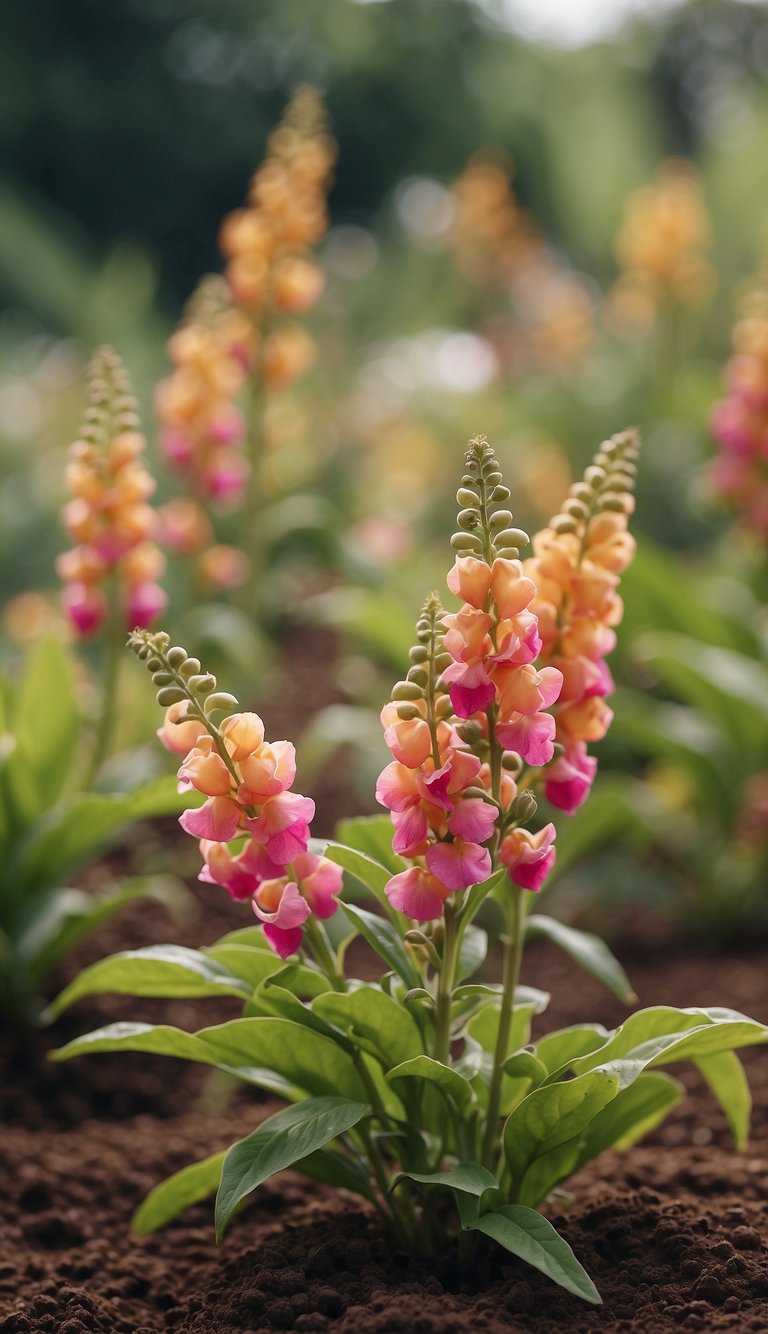

Snapdragons are popular garden flowers known for their bright, vibrant colors and unique flower shapes. They thrive best in well-drained soil and prefer a neutral to slightly alkaline pH level.
Using coffee grounds on snapdragons can create an overly acidic environment, detrimental to their growth. The acidity can interfere with the plant’s ability to take up essential nutrients, leading to poor health and reduced flowering.
It’s important to avoid adding coffee grounds directly to the soil around snapdragons. Instead, using other organic materials that don’t alter soil pH significantly can help maintain the ideal growing conditions for these plants.
For gardeners looking to boost snapdragon growth, consider compost or balanced fertilizers instead of coffee grounds. This ensures the soil retains the necessary pH balance and nutrients snapdragons need to flourish.
Snapdragons can be a beautiful addition to any garden but require the right care. Keeping an eye on soil conditions and avoiding coffee grounds can help these vibrant flowers thrive in your garden.
For more details on plants that do not like coffee grounds, check this Gardening Lovers Club article.
#9 – Rosemary
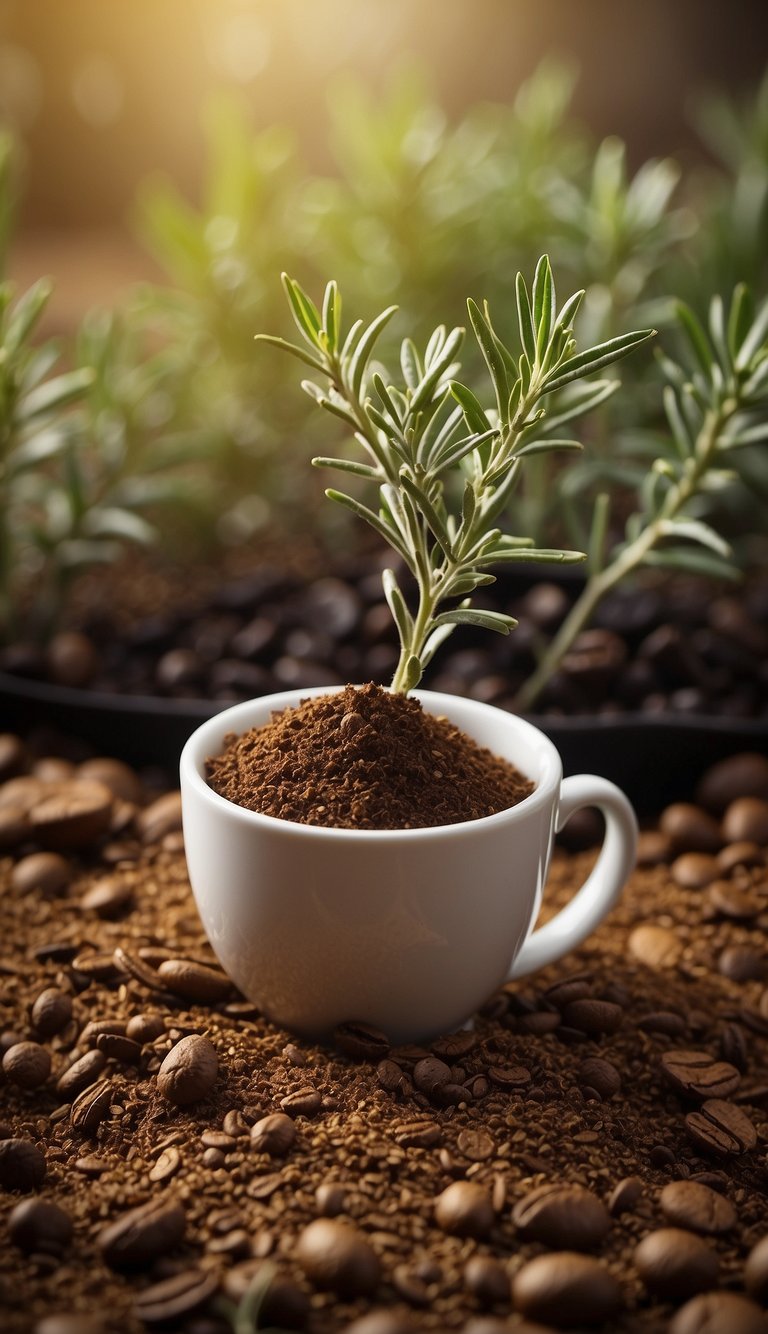

Rosemary plants do not thrive when grown on coffee grounds. These plants prefer alkaline to neutral soil conditions.
Using coffee grounds, which are acidic, can disrupt their growth. An excess of acidity in the soil can cause rosemary plants to develop yellowing leaves.


Inappropriate soil pH might also result in less vigorous growth. Ensuring the soil remains balanced is key to keeping rosemary healthy.
Find more information about why rosemary does not favor coffee grounds here.
#10 – Mint
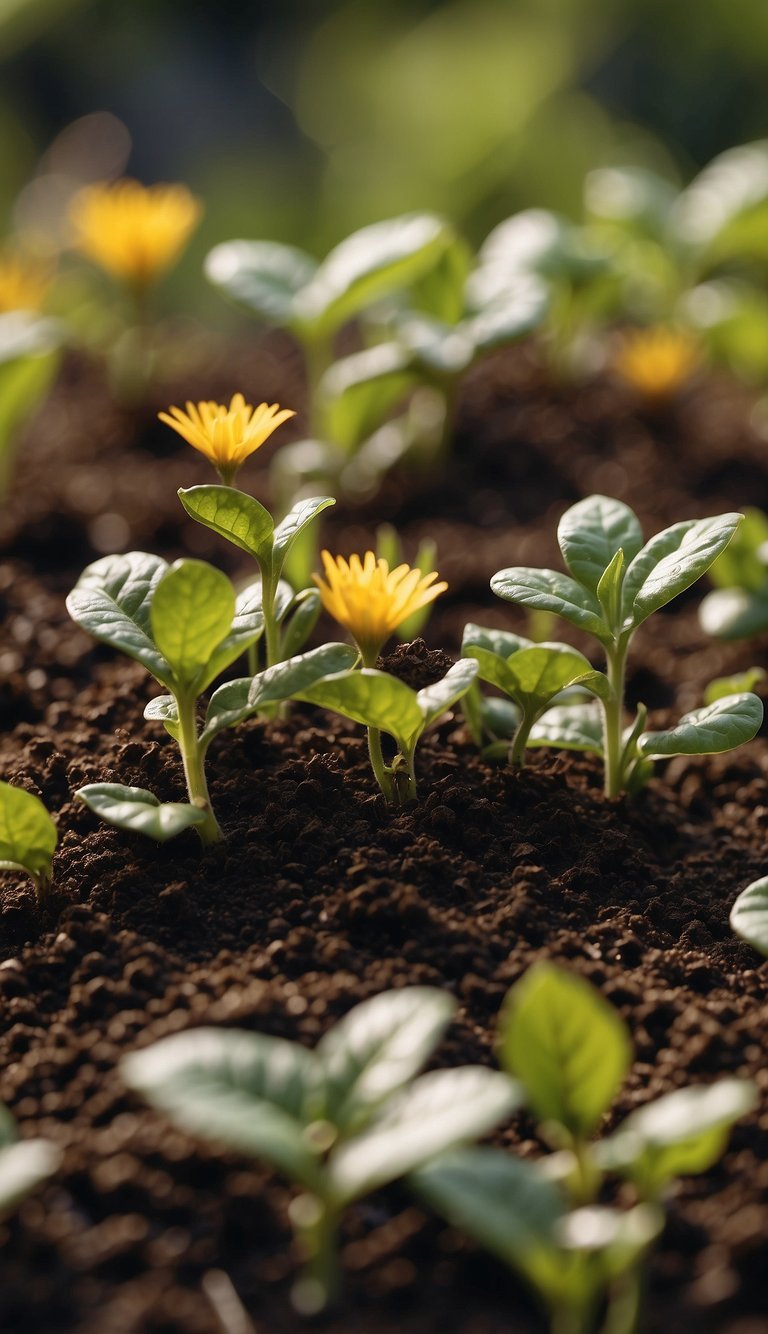

Mint doesn’t thrive well with coffee grounds. Coffee grounds can make the soil too acidic for mint. Mint prefers soil that is slightly alkaline to neutral.
Mint plants need well-draining soil. Coffee grounds, when used in excess, can hold too much moisture. This can cause root rot and other problems.
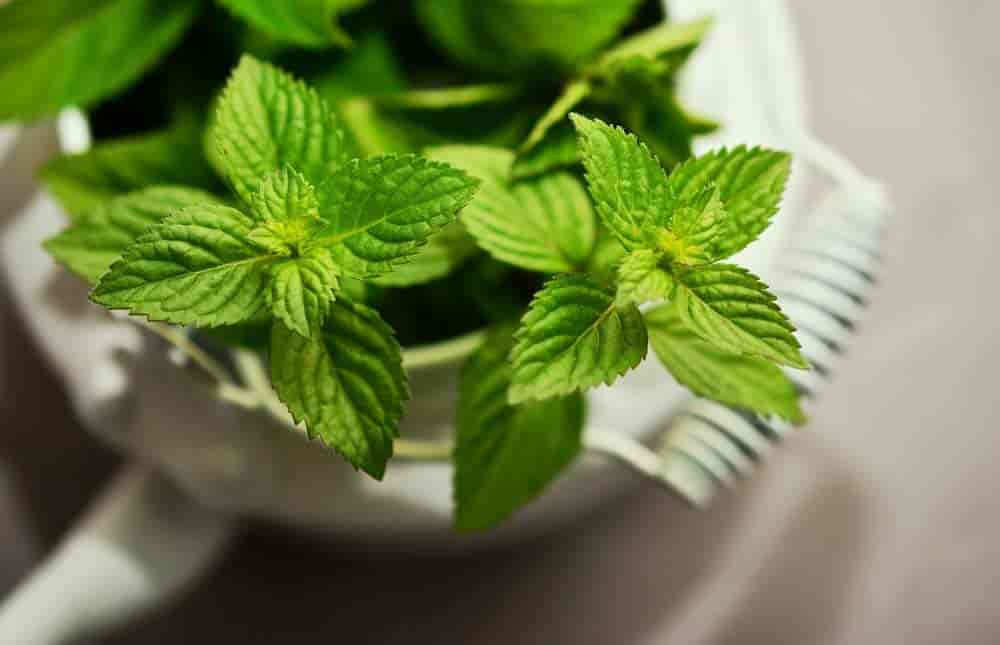

Coffee grounds also compact the soil. This prevents proper air circulation for mint roots. Mint plants require good aeration for healthy growth.
While coffee grounds can provide some nutrients, they might not be balanced for mint’s needs. Too much nitrogen from coffee grounds can lead to leggy growth.
To keep mint plants healthy, opt for a balanced compost. Check the soil pH regularly to ensure it remains in the optimal range.
For more information, you can check Does Mint Like Coffee Grounds?.
Understanding Plant Preferences
Different plants have specific needs regarding soil acidity and nutrient requirements. Knowing these can help you decide which plants will thrive with certain additives like coffee grounds.
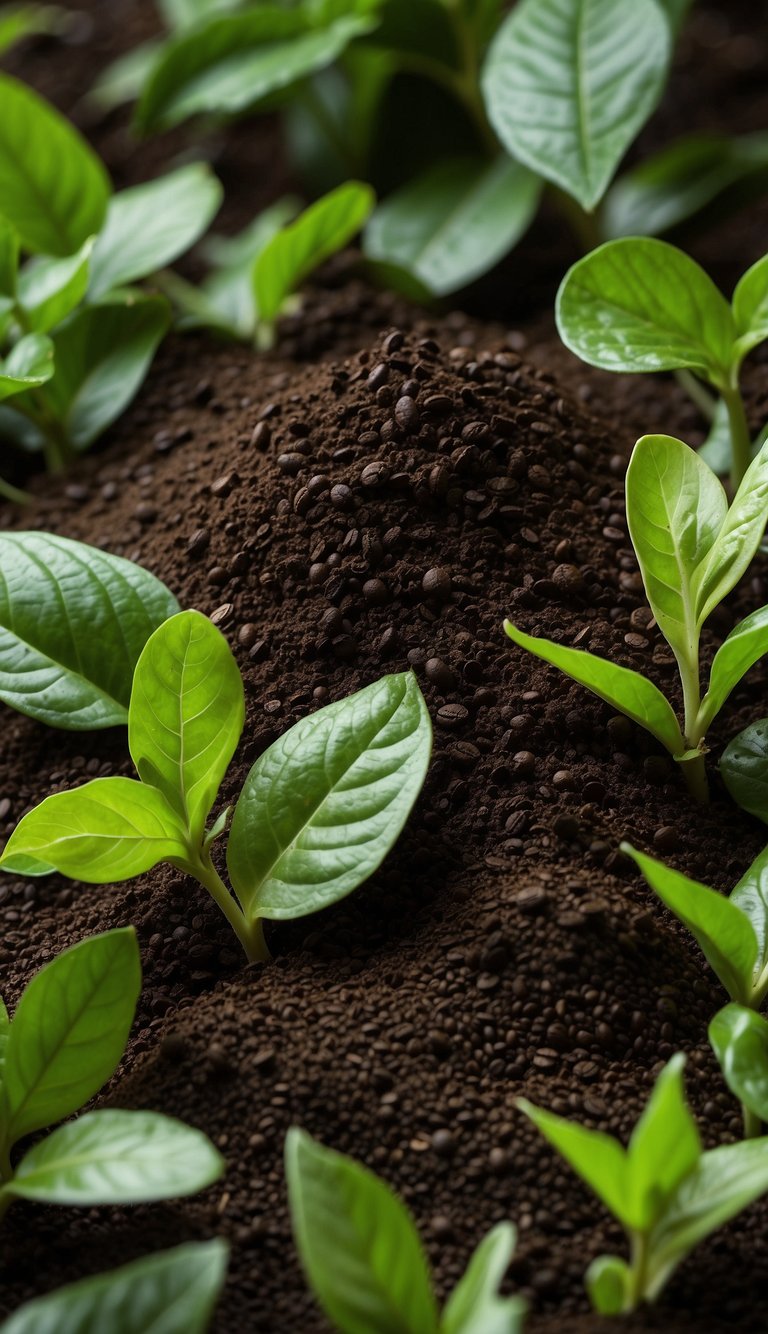

Soil Acidity and Plant Health
Soil acidity, measured on a pH scale, significantly affects plant health and growth. Most plants prefer slightly acidic soil to neutral, with a pH level between 6.0 and 7.0. Coffee grounds are acidic, with a pH typically around 5.5.
Plants like rosemary and lavender prefer alkaline to neutral soil. Using coffee grounds can make the soil too acidic for them, resulting in yellowing leaves and stunted growth. To avoid these issues, know the pH preference of each plant in your garden.
Nutrient Requirements of Different Plants
Plants have varying nutrient needs. Coffee grounds are rich in nitrogen, which benefits plants that require high nitrogen levels. Examples include hydrangeas and camellias, which thrive in more acidic soils and can benefit from coffee grounds.
Conversely, plants like roses and lavenders have more diverse nutrient requirements and may not respond well to coffee grounds without a balanced compost mix.
Too much of one nutrient can lead to deficiencies in others, so it is crucial to match the nutrient profile of coffee grounds to the specific needs of each plant.
Understanding Coffee Grounds and Soil Acidity
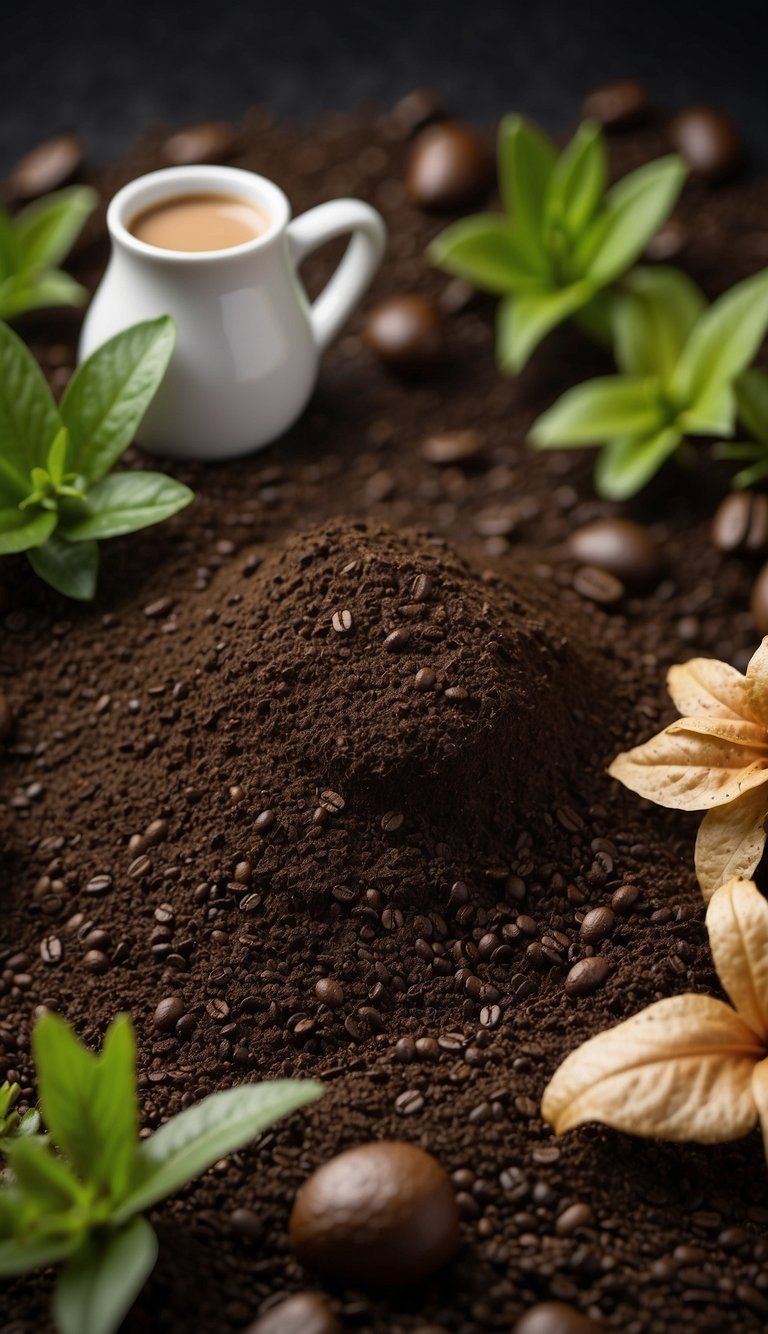

Coffee grounds can affect your garden soil in several ways. They alter the pH levels, contribute important nutrients, and impact soil nitrogen balance.
How Coffee Grounds Affect Soil pH Levels
Coffee grounds are often slightly acidic, with a pH around 6.5. This can influence the overall acidity of the soil. Acid-loving plants, such as blueberries and azaleas, may benefit from the added acidity.
On the other hand, plants that prefer neutral or alkaline soil, like lavender or rosemary, might struggle. When using coffee grounds, it is important to test the soil pH regularly to ensure that the conditions remain suitable for all the plants in your garden.
Nutrient Composition Of Coffee Grounds
Coffee grounds are rich in various nutrients. They contain nitrogen, which is essential for plant growth. In addition to nitrogen, they also include small amounts of phosphorus and potassium. These nutrients can enhance soil fertility and support strong, healthy plants.
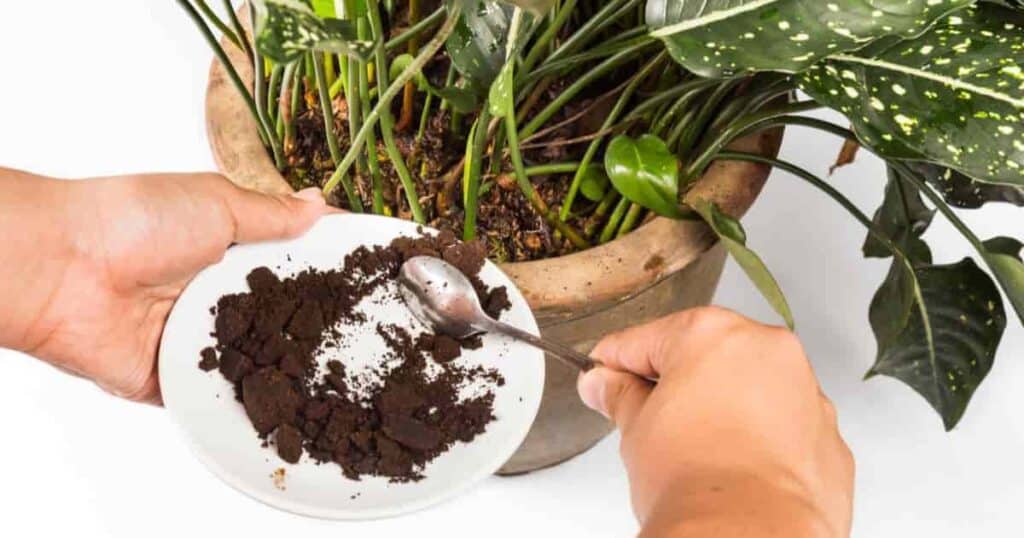

However, using coffee grounds alone may not provide a balanced nutrient mix. It is beneficial to combine them with other compost materials. This approach ensures that plants receive a wide range of nutrients for optimal growth.
Impact on Soil Nitrogen Balance
Coffee grounds can affect the nitrogen levels in the soil. They contain a high nitrogen content, which is beneficial for plant growth. When used as mulch or added to compost, they help increase the soil’s nitrogen availability.
However, if used improperly, coffee grounds can also lead to nitrogen imbalance. Fresh coffee grounds may tie up nitrogen during decomposition, making it less available to plants.
Properly composting the grounds before adding them to the soil can help prevent this issue. This allows the nitrogen to be released more gradually and is more beneficial to plants.
Common Misconceptions About Using Coffee Grounds
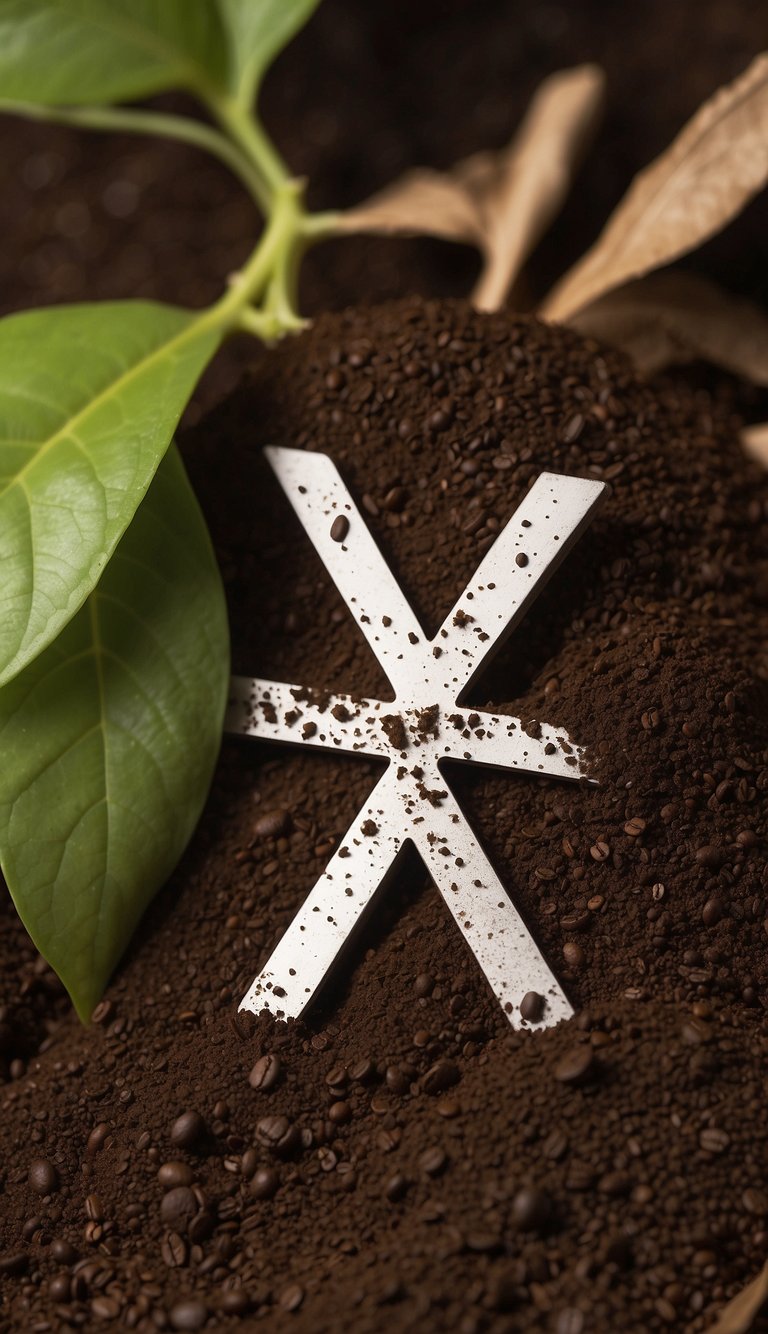

Many gardeners believe coffee grounds can benefit any plant, but this is not always the case.
Misconception 1: Coffee grounds will acidify the soil for all plants.
While coffee grounds are slightly acidic, they are not universally beneficial. Only some plants thrive in acidic soil.
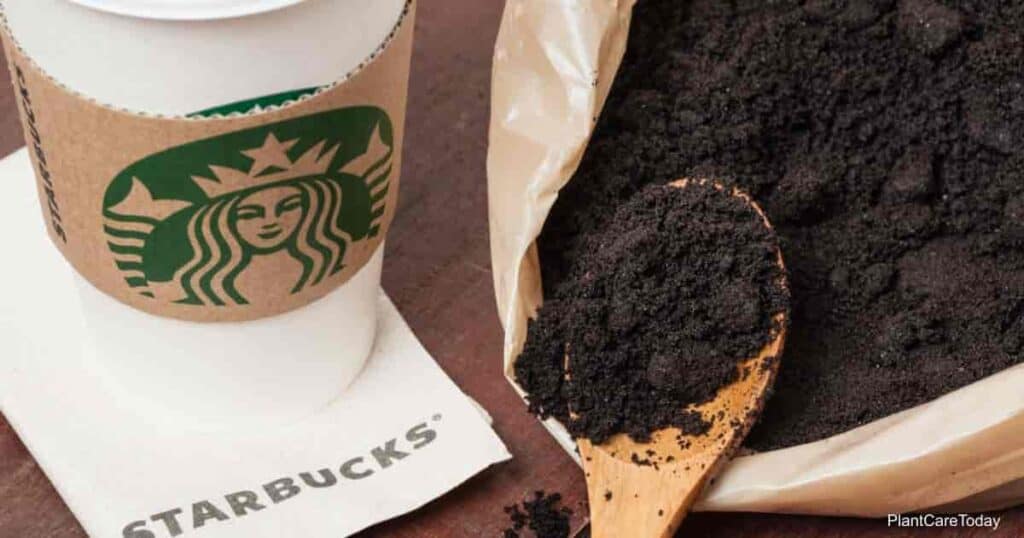

Misconception 2: Using coffee grounds as mulch prevents pests.
Coffee grounds do have some pest-repellent properties, but they are not a foolproof solution for pest problems.
Misconception 3: Coffee grounds add essential nutrients to any soil.
Coffee grounds contain nitrogen, potassium, and phosphorus, but not all plants need these nutrients in the same proportions.
Misconception 4: All organic matter from coffee grounds is good for compost.
While coffee grounds can be part of compost, they should be balanced with other materials to avoid creating an imbalance.
Misconception 5: Coffee grounds only help with soil structure.
Although coffee grounds can help with soil structure, they can also compact and block air and water flow if not used properly.
Alternatives to Coffee Grounds for Gardening
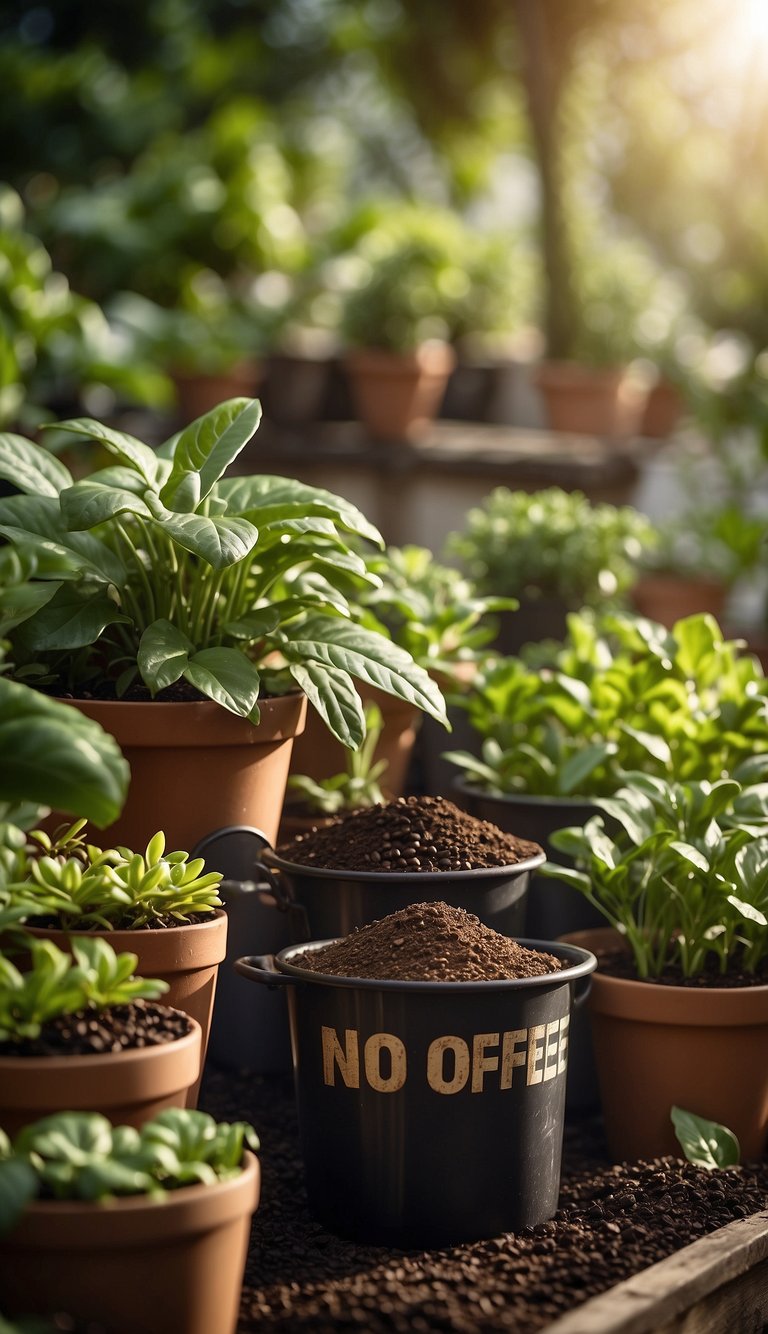

There are excellent alternatives for gardeners looking to enhance their soil without using coffee grounds. Two of the most effective options include composting kitchen scraps and using mulch and organic matter.
Composting Kitchen Scraps
Turning kitchen scraps into compost is a great way to enrich garden soil. Vegetable peelings, fruit rinds, eggshells, and coffee filters can become nutrient-rich compost.
These items decompose and add valuable nutrients like nitrogen, phosphorus, and potassium to the soil.
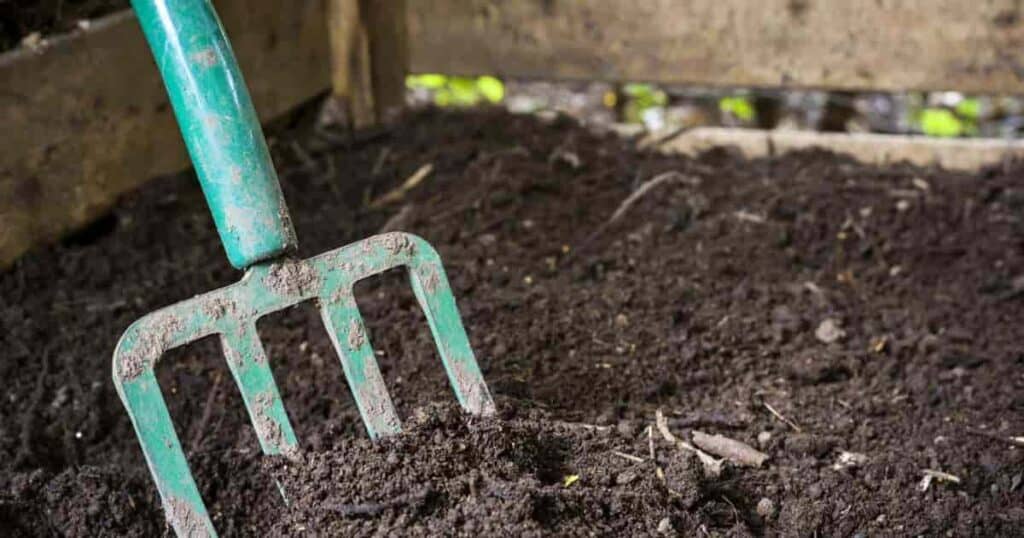

Composting is simple. Collect organic kitchen waste in a compost bin. Ensure the bin is well-aerated by occasionally turning the compost to speed up decomposition. This process helps create dark, crumbly compost known as “black gold” by gardeners.
Compost from kitchen scraps helps improve soil structure, retains moisture, and encourages beneficial microorganisms. Additionally, it reduces kitchen waste, making it a sustainable gardening practice.
Using Mulch and Organic Matter
Mulch and organic matter are key to maintaining healthy garden soil.
Common mulches include shredded leaves, straw, and wood chips.
Mulching helps to retain soil moisture, suppress weeds, and regulate soil temperature.
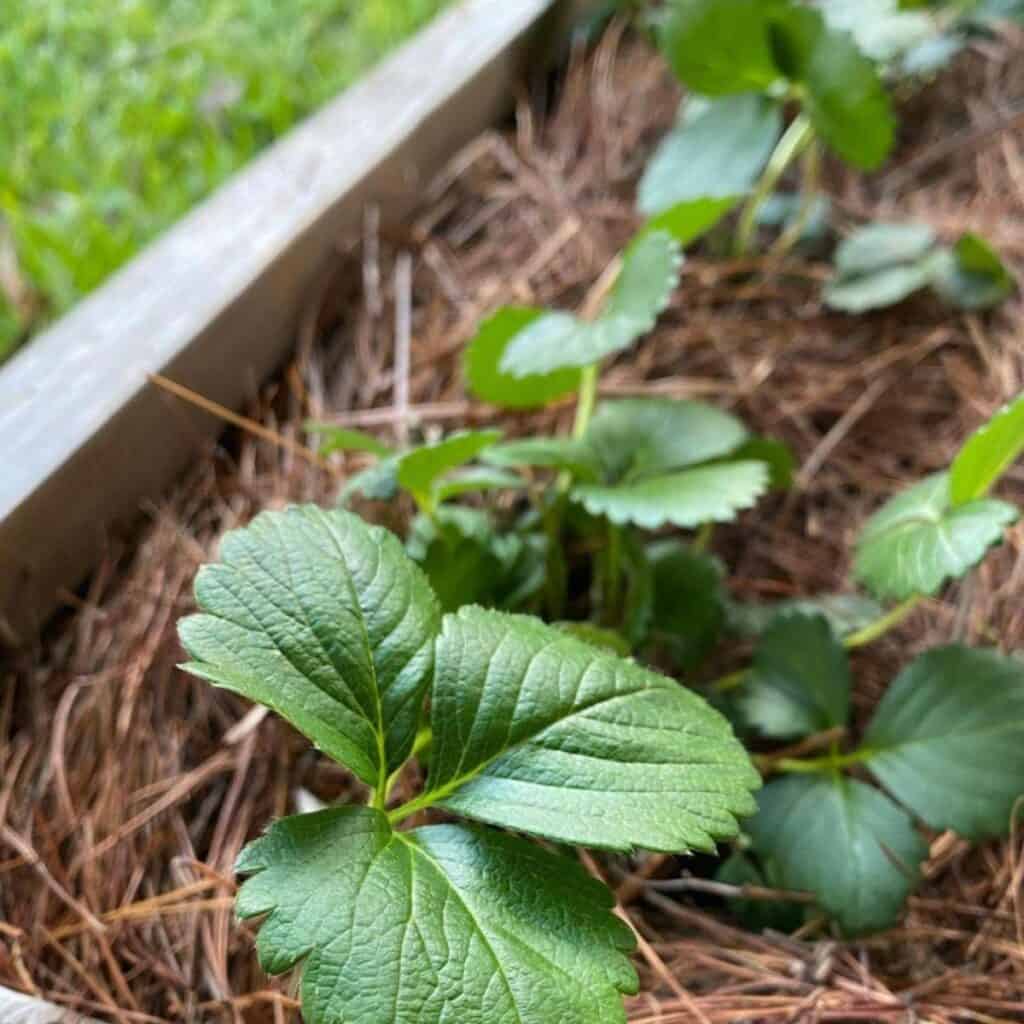

Organic matter like well-rotted manure or leaf mold can be incorporated directly into the soil.
These materials break down slowly, providing a steady supply of nutrients. Additionally, they improve soil texture and enhance its ability to retain water.
Spread a layer around plants to apply mulch. Make sure not to cover the plant stem to prevent rot.
This method improves soil health and gives the garden a neat and tidy appearance.
Using these alternatives ensures a thriving garden without the need for coffee grounds.




